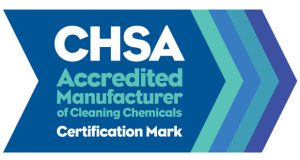 The business case for occupational hygiene interventions is strong and convincing. So why are hundreds of thousands of people in the UK still made ill by their work each year?
The business case for occupational hygiene interventions is strong and convincing. So why are hundreds of thousands of people in the UK still made ill by their work each year?
Mary Cameron, occupational hygiene team leader, SOCOTEC, discusses the potential reasons behind poorly implemented occupational health strategies and how companies should be looking to overcome them in a bid for a healthy workforce and improved company performance.
Introduction
Good occupational health goes hand in hand with good business. Companies who apply good occupational hygiene practices and implement adequate exposure prevention measures will reap the benefits of a healthy workforce and improved company performance. If the benefits are obvious and abundant, why then are people still made ill from work?
There is no simple answer to this complex problem but the roots to this problem lie in: misspent money, poor workplace culture, lacking awareness, and inadequate control measures. Improvements to these issues can lead to fewer work-related illnesses through improved awareness of the consequences for workplace health negligence, a positive change to workplace culture, foresight spending by business managers and a control measure maintenance regime.
Occupational health-related deaths from past exposures are significantly more prevalent than occupational safety-related deaths, with many new cases of occupational ill-health each year.
Not all companies have the understanding on how to invest in effective yet cost efficient exposure control measures or the foresight in this planning. Not all workers or companies are aware of the adverse health effects upon exposure. Not all workplaces have a positive occupational health culture. And beyond these factors, sometimes even the best control measures can fail causing exposure and subsequent ill-health. Occupational health interventions also require backing with a strict enforcement policy to be effective, which can be difficult to achieve.
Misspent Money
Protecting workers’ health isn’t just about doing what’s morally obliged or what’s legally required, it makes sense (and cents!) for the business. Benefits of properly invested occupational health programmes can pay off at much more than the initial investment price, with a productive, resilient, stable, experienced and healthy workforce. Plus, early planning and effective control design can reduce or even eliminate health hazards.
Understandably, though, it can be a difficult call for company owners to decide how best to utilise their funds and, unfortunately, all too often occupational health can be neglected and money is underspent or inappropriately spent towards this. As awareness grows and occupational health guidance reaches more companies, this should become less of a problem.
Effective controls, however, do not necessarily mean expensive controls. Occupational hygienists are able to advise companies on the most adequate, suitable and cost-effective control measures, with the choice of control measures proportionate to the risks posed by the work. This can include hazard elimination to avoid the need for personal protective equipment (PPE), hazard containment to reduce the cost of waste disposal and environmental control, or substitution to a less hazardous material which reduces worker exposure, ill-health and subsequent costs of this.
Often, PPE is chosen due to the lack of sufficient guidance on other more appropriate prevention, engineering and administrative controls.
In many cases PPE is a false friend (although it is understood that in certain circumstances PPE is necessary). PPE can seem more financially manageable, coming at lower costs spread over time but these costs can quickly add up. Beyond the cost of the PPE itself, the reliance on PPE as a control measure can also require health surveillance, respiratory protective equipment (RPE) face fit testing, in-situ glove testing, worker training on proper use for fitting and removal, maintenance, replacement and disposal costs.
Should your PPE fail and exposure lead to ill-health, the company will have another helping of costs on hand. This can include absenteeism, reduced production, staff turnover, retraining and recruitment costs as well as potential legal and medical costs. These problems can be avoided by applying the hierarchy of control with appropriate guidance on spending.
Poor Workplace Culture
Workplace culture is an important element which can determine whether or not workers are willing to follow the site’s occupational health procedures. Poor mentality towards occupational health can lead to behavioural deviation, with some workplace health interventions perceived as a burden and unnecessary – especially when health effects are not seen upfront.
Changing this behaviour is a very difficult, long-term and extensive exercise yet extremely important to achieving workplace health. Creating a positive workplace culture by encouraging behaviours that minimise exposure to health hazards can be achieved, often through providing workers with the necessary skills and equipment to undertake their task in a way which avoids exposure.
The employer should provide incentives for the worker to conform to healthy working practices, demonstrate the positive consequences of healthy behaviour and negative consequences of non-compliant behaviour. Through collaboration and a shared responsibility for workplace health, both employees and the employer can create a positive workplace health mentality with increased health hazard awareness.
Lacking Awareness
Awareness is another key factor in workplace ill-health prevention. You can’t control something that you don’t understand. Companies must understand the health risks of the hazards present (chemical, physical, biological, psychological) and why exposure prevention is important.
The UK is one of the world-leading front runners when it comes to worker health protection legislation and initiatives. These initiatives include the Health and Safety Executive’s ‘Helping Great Britain Work Well’ and ‘Go Home Healthy’ campaigns which are intended to promote healthy working practices, a broader ownership of health and safety, tackle the cost of work-related ill-health, and simplify risk management. These solutions improve working practices and workplace environments through appropriate prevention and control measures. Continued efforts to spread awareness and promote these campaigns are essential in the fight against occupational ill-health.
Some companies may show resistance to contact Health and Safety Executive regulators for occupational health advice or assistance due to concerns of being targeted for inspections on a broader basis. These awareness campaigns, which are complementary to the overlying regulations, aim to bridge this gap and allow the development of understanding, managing and controlling health risks.
Inadequate Control Measures
Even if the control measures implemented are suitable and proportionate to the health risks, a good control becomes a bad control if it no longer performs as intended due to poor maintenance, repair or application issues.
Occupational hygienists see workplaces all too often with deteriorating local exhaust ventilation (LEV) systems and PPE in dirty conditions. Other common inadequate control problems include poor captor hood positioning due to lack of operative training, secondary exposure risks due to poor housekeeping, uncomfortable gloves from overheating and RPE which is not face fit tested.
Control measure maintenance, examination and testing programmes are crucial in continued adequate control as well as the appropriate selection and application of these controls.
Failings in workplace health protection can also stem from a poor understanding of what adequate control is. The Control of Substances Hazardous to Health (COSHH) Regulations state three points which determine ‘adequate control’.
Exposure to the hazardous substance should not exceed the workplace exposure limit (WEL) and exposure to carcinogenic, mutagenic or sensitising substances must be reduced to ‘as low a level as is reasonably practicable’.
Also, the principles of good practice for the control of exposure to hazardous substances must be met (COSHH Schedule 2A). Although WEL compliance is required, the WELs are not a defined line between ‘safe’ and ‘unsafe’ and emphasis should be heightened on preventing exposure.
The company should undertake occupational exposure monitoring (should the risk assessment deem this necessary) but focus on assessing and improving upon their exposure prevention strategy. The company should keep in mind that a personal exposure monitoring result below a WEL does not necessarily mean that no further actions need be taken. This number is an indication only and good practice for control is paramount.
Shifting Focus onto Health
We have seen a cultural shift in workplace safety awareness. Workplace accidents and fatalities have decreased significantly and safety management is widely accepted. This may be due to the delay of seeing the effects to health, as well as the comparative ease of safety management but we need to treat health like we treat safety.
Although occupational ill-health is becoming widely recognised by industry, there are still nearly one hundred times more deaths caused by occupational disease than by accidents in the UK every year; we need to treat health like we treat safety.
UK industry is now recognising that occupational disease is preventable and good workplace health can be achieved. This can be accomplished by early planning of financially viable effective control measures, proper maintenance and application of those control measures, seeking advice and intervention when needed, promoting a positive workplace culture and occupational health awareness campaigns. Employers that invest in workplace health can expect increased productivity and employee performance among other benefits. Good occupational hygiene makes healthy workers and healthy workers make good business.





